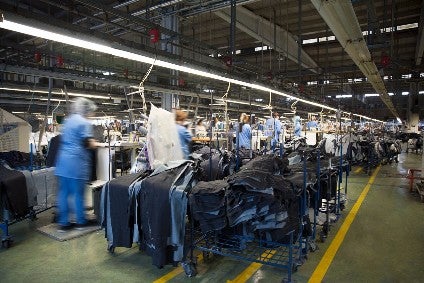
Latin America could become a post-pandemic apparel manufacturing destination for Canada and the US if regional suppliers and governments seize the opportunities, new research suggests.
A collaborative effort by textile and apparel manufacturers in Mexico, El Salvador, Guatemala, Honduras, Haiti and the Dominican Republic could lead to a resurgence of investment, according to a report by Nicole Bivens Collinson from international trade law firm Sandler, Travis and Rosenberg (ST&R).
She suggests they should take advantage of free trade agreements or preferential programmes providing duty free access to the US and Canada, as well as leveraging their geographic proximity.
The ‘Apparel Manufacturing: Lessons from the Pandemic‘ report points to a number of factors that could prove beneficial for textile and apparel manufacturers in these countries. For example, there are noticeable vulnerabilities in brand and retailer supply chains that are prompting them to consider changes.
“Most companies are reassessing and restructuring their global supply chains,” Collinson says. “The economic costs to retailers are resulting in physical presence reductions and closures of stores. The reduction of stores means a reduction in inventory.”
As such, Collinson says brands are looking at rebalancing their sourcing to ensure they are not “overexposed” in one geographical area; are considering a “hub and spoke” sourcing model to manufacture in geographical proximity to the target market; are looking at vertical manufacturing locations either as an individual country or as a close geographical region of countries; are looking at sustainable production to meet growing consumer demands; and are looking at nearshoring suppliers as it helps to meet several of the sourcing restructuring objectives.
Additionally, a transformational shift is occurring in consumer shopping behaviours, with e-commerce sales increasing exponentially.
At the same time, the US and Canada are imposing trade-restrictive measures on major suppliers in China in response to concerns about forced labour practices in the country. Further, there are increasing civil and governmental pressures to bring manufacturing and its attendant jobs back to or nearer to the US and Canadian markets.
El Salvador, Mexico and Honduras are among the top ten apparel importers to the US, but in 2020 they all recorded declines. El Salvador and Honduras saw declines of 34% and 32%, respectively, to 492 million square meters (MM2) and 681 MM2. Imports from Mexico were down 14% to 680 MM2. Their volumes also pale in comparison to the three largest suppliers China, Vietnam and Bangladesh, which recorded shipments of 8,466 MM2, 3,788 MM2, and 1,890 MM2 respectively.
The report asserts that the six countries can take advantage of the evolving situation and become a “post-pandemic manufacturing destination” if they engage in a collaborative public/private sector effort that includes continued steps to:
- Demonstrate flexibility and quick response to market circumstances
- Maintain versatility in production and supply chains for e-commerce and drop shipment supplies
- Develop verticality in supply chains for yarns, fabrics, and apparel by working as a regional coordinated supplier
- Capitalise on their proximity to, and free trade agreements with, the US and Canada
- Provide complete visibility into their supply chains to demonstrate that no forced labour is used.
Other recommendations include accelerated trade lanes for trusted or known traders, cooperative agreements with the US and Canada for pre-approved customs clearance for shipments, regional education and training initiatives, and integration of existing free trade agreement provisions.



